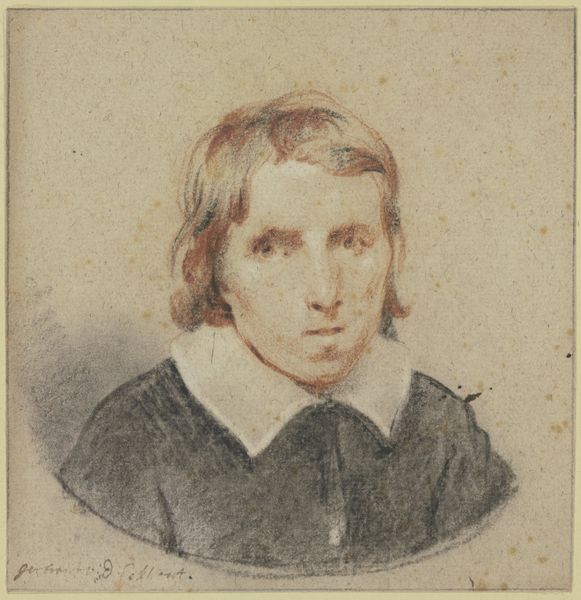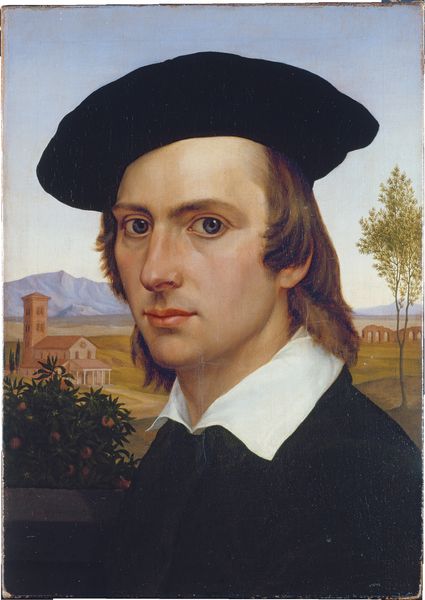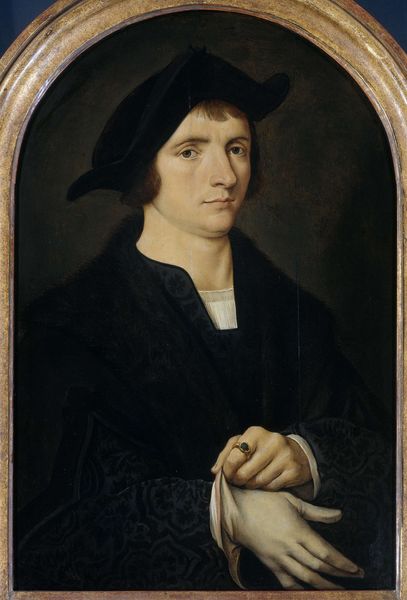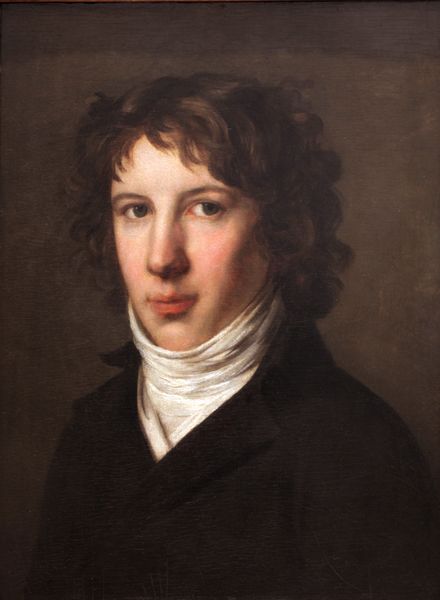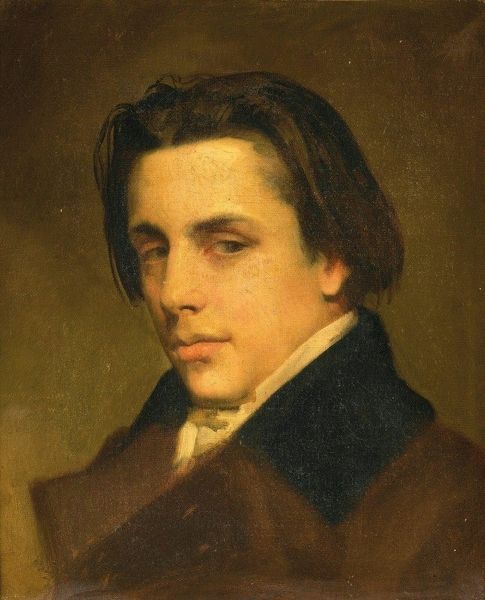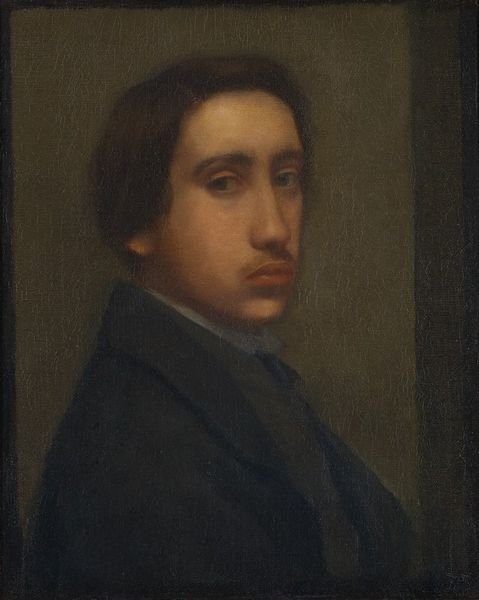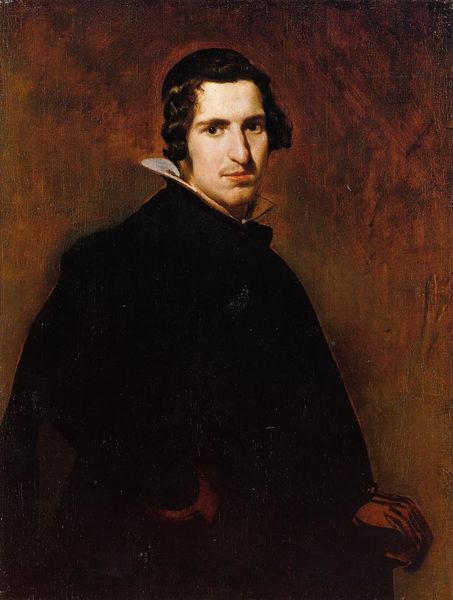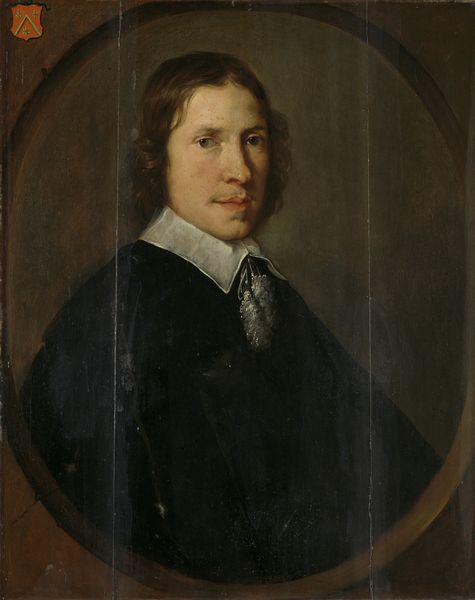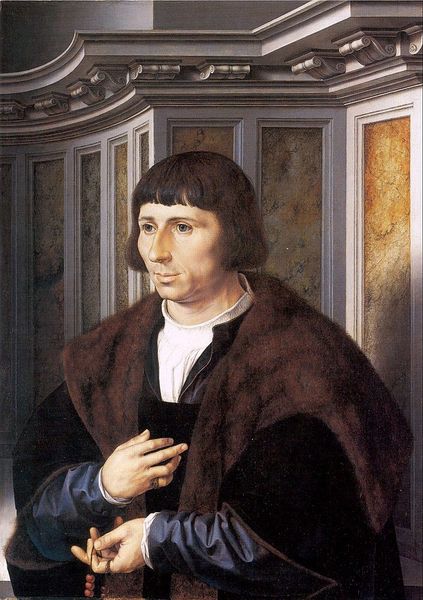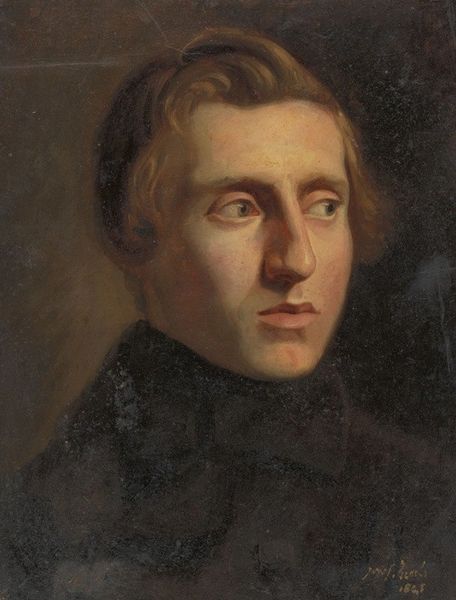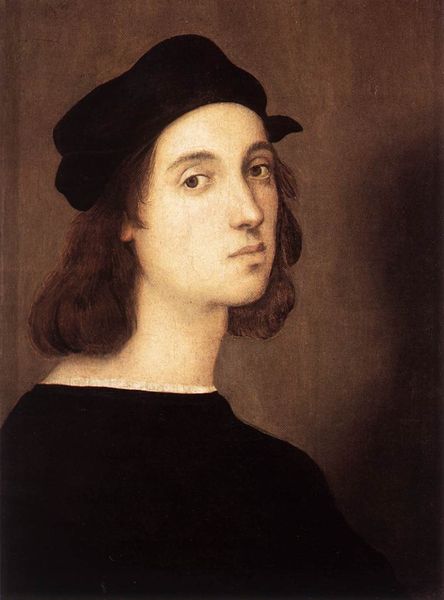
oil-paint
#
portrait
#
self-portrait
#
portrait
#
oil-paint
#
romanticism
Dimensions: 22.7 x 17.1 cm
Copyright: Public Domain
Curator: Looking at Franz Pforr's "Self-portrait," painted in 1810, now hanging in the Städel Museum, one immediately notices an intensity in the artist's gaze. The texture of the oil paint on the canvas gives a realness to his depiction. Editor: Yes, that direct gaze seems to question us across time, doesn't it? I am struck by its androgyny. The long hair and pale skin, common Romantic tropes, become subversive here. Who was Pforr speaking to or about with this almost hyper-sensitive presentation? Curator: Pforr, as a founding member of the Brotherhood of St. Luke, or the Nazarenes, was striving to revive honesty and spirituality in art, moving against what he saw as the superficiality of academic painting. This self-portrait can be viewed through that lens as a commitment to his artistic ideals, his identity entwined with the movement. Editor: I see what you mean, the meticulous, almost miniaturist, detail of the painting echoes the art of the Renaissance masters they admired. But it is really the subtle contrast— the soft vulnerability versus the austere composition, or even in his clothing—that reveals so much. I find that incredibly potent and indicative of broader gender constructs within this context. Curator: It’s interesting how you read that contrast. The Romantic movement embraced a kind of introspective self-expression that challenged social norms of the time, specifically concerning individualism. Editor: Indeed. The gaze is far more complex. Consider how the face is slightly turned away yet he stares directly at us. It demands attention, as if searching for an acknowledgement to his existence, his purpose, his gender, perhaps? Curator: And within the painting’s structure, he clearly signifies purpose and strength through a stoic gaze and calculated body language, regardless of softness in detail, don't you think? The background recedes, placing all emphasis on Pforr's figure. Editor: It also might reflect the turmoil and searching in the art world and Western societies generally, at the precipice of seismic economic and social shifts, that reverberate to this day. It serves to underscore the intensity of his identity in the midst of rapid change. Curator: Absolutely. By returning to his moment in time, we’re invited to unpack those societal intersections, seeing art history, social identity and individual conviction beautifully entwined. Editor: Looking again, one is left with the echo of searching, of vulnerability—a beautiful statement, rendered exquisitely.
Comments
stadelmuseum about 2 years ago
⋮
It almost seems as if we can already see traces of the severe illness which would lead to Franz Pforr's death two years later at the age of only twenty-four. As one of the intellectual leaders of the Brotherhood of St Luke, the artist community which moved from Vienna to Rome in 1810, Pforr supported the idea of an art which was to be revived through spirituality and piety. In this bust portrait, dominated by his penetrating gaze, Pforr demonstrates his adherence to the tradition of his admired role model Fürer. The austerity and simplicity of the portrait match the principle of the simple life to which the artists subscribed in their quarters in Rome, the Monastery of Sant'Isidoro.
Join the conversation
Join millions of artists and users on Artera today and experience the ultimate creative platform.
